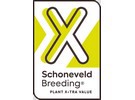"We need to make something better than what is on the market so far." Gerard Zwiers, head of breeding at Schoneveld Breeding, had a clear goal in mind. "We wanted to achieve a new benchmark in Gerberas," he says from his office at Schoneveld Breeding's main location in Wilp.
In collaboration with a Danish breeder, Gerard and his team went to work. The Gerbera market had been on the decline in recent years, as the uniformity of the starting material often left much to be desired. Growers often had to go through production and the average quality was not good enough. "That's where opportunities lie," Gerard soon knew. "Other than that, it is mainly a learning on the job project. Discovering stuff, making mistakes, it's all part of it."

Uniformity first
In Gerard's view, uniformity is the most important point on which growers select. "Because we developed Joybera, they now have a quality product in their greenhouses. If they go through the crop once, they have already got about 90% of the total production. Incredibly efficient. And because the shelf life of Joybera is so great, consumers also come back automatically. They can enjoy the beautiful colours and lots of flowers for a very long time."
Unprecedented success
"At some point we went to growers with Joybera," Gerard looks back. "In Italy, it was an instant huge success. One grower who took part in the trial decided afterwards to change his entire production right away and switch completely to Joybera." And there were more like that, according to Gerard. "Once growers have seen the success of Joybera, they don't want to go back to how they did it before."
Attention of grower
A good start is half the battle. Good uniform starting material is important for successful cultivation. After that, it is important to build up a good and healthy root system. Drier cultivation helps with this. "For some growers, it is challenging to keep the plant a bit drier than they might be used to," Gerard notes. "But it is important to keep the plant compact. Other than that, cultivation is not that difficult." The biggest challenge lies in insect attractiveness. "The grower has to pay a lot of attention to crop health," Gerard stresses.
Colourful future
"Unique to Joybera is the number of flowers that emerge per bloom. Often 3 or even more at a time. Joybera is a very abundant plant." Gerard is very happy with the eight colours now on the market. "And we still have all kinds of great plans, you know. More colours, for example. And we want a desired plant size for every market so we're working hard on that now too. But the most important thing in what we do is making sure we maintain the top quality that Joybera now holds. We have achieved a new benchmark and we are building on that to an ever-widening range."
For more information: Schoneveld Breeding
Schoneveld Breeding
www.schoneveld-breeding.com
